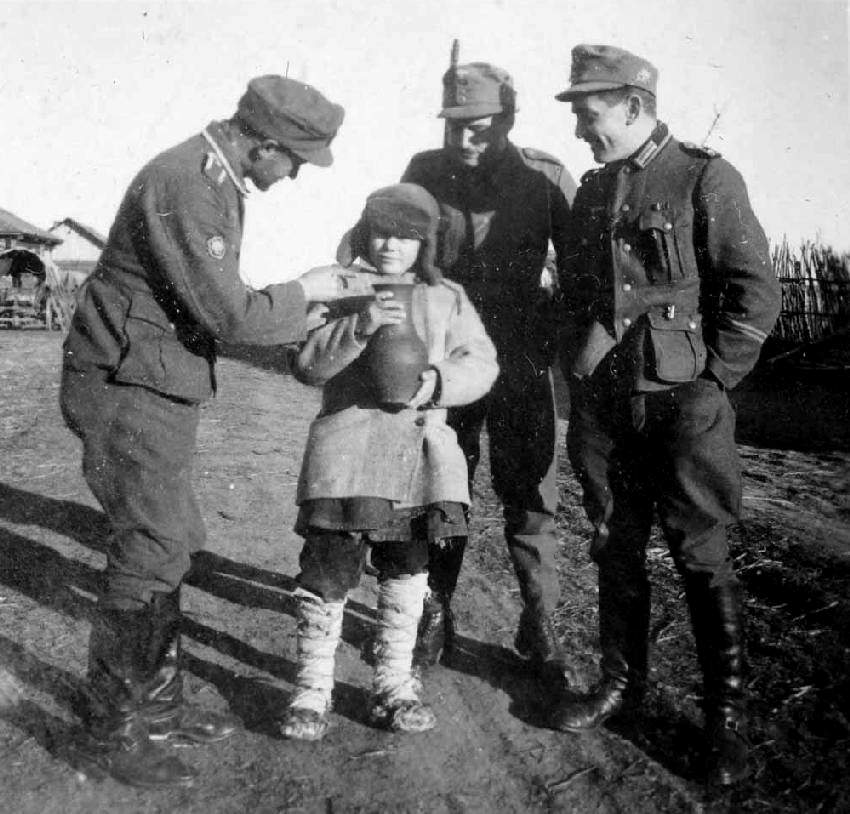
Operation Barbarossa: Cold Weather Problems

Figure 1.--This German soldier photograph is unidentified. It is obiously taken in the Soviet Union after the weather began to turn cold. Note the soldiers are wearing light uniforms. The soldiers are Gebirgsjäger (Mountain Troops)--notice the Edelweis emblem. We think it was probably taken in the eastern Ukraine probanly in early November. The soldiers are obviously uncomfortably cold in their light uniforms and it has not even begun to school.
|
|
Several problems surfaced for the Wehrmacht as the weather turned cold. The most obvious is that the troops were not oufitted for the cold weather. The Russia winter is severe even for people properly outfitted. There were no winter uniforms available for the troops at the front when the weather turned cold. It was not that winter uniforms did not exist, it was that they were in warehouses in the Reich rather than at the front. The Germans had planned on a quick summer campaign. Thus planning for winter fighting was not part of Barbarossa. As the fighting moved further ad further east, the supply lines becane overstreached. Priority was given to arms and anunitiion. The winter uniforms remained in warehouses in the Reich. Another prioblem was the eqioment. Nor was their equipment built for winter operations. Nor wre there logistical preparations to ship winter clothing and equipment rapidly to the front. The mud clogged roads caused by the Fall rains and then the early onset of Winter denied the Wehrmacht one of its key advantages--mobility. All accounts of Barbarossa describe the mobility of the Wehrmacht as a primary factor in its victories at the onset of Barbarossa and the Red Army's inability to react effectively. [Clark] Part of the problem was the lubrucants used. Guns froze. The Russians on the otherhand were prepared for winter weather and had tactics and equipment for it. As the temperatures fell, German tanks could not even been started without first building a fire underneath to heat the engines. An additional problem was the animals. Both the Germans and Soviets relied on horses as draft animals. The German horses, however, proved to be unable to withstand the rigors of the Russian wibnter. Russian resistance was stiffening by October-December, but the cold winter weather which enveloped the Wehrmacht by late November had a devestating impact on fighting efficency and the operation of German equipment.
Sources
Clark, Alan. Barbarossa: The Russian German Conflict, 1941-45.
HBC

Navigate the Boys' Historical Clothing Web Site:
[Return to Main Barbarossa Winter page]
[Return to Main Barbarossa campaign page]
[Return to Main Operation Barbarossa page]
[Return to Main air war in the East page]
[Introduction]
[Activities]
[Biographies]
[Chronology]
[Clothing styles]
[Countries]
[Bibliographies]
[Contributions]
[FAQs]
[Glossaries]
[Images]
[Links]
[Registration]
[Tools]
[Boys' Clothing Home]
Created: 3:17 AM 7/2/2011
Last updated: 3:17 AM 7/2/2011



